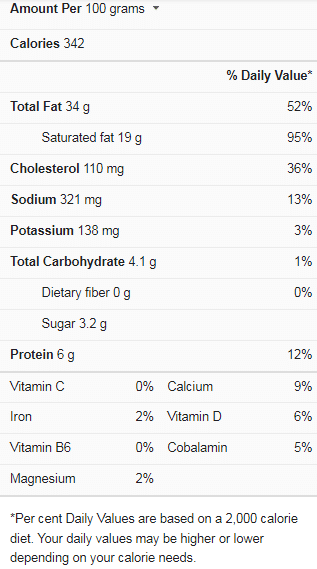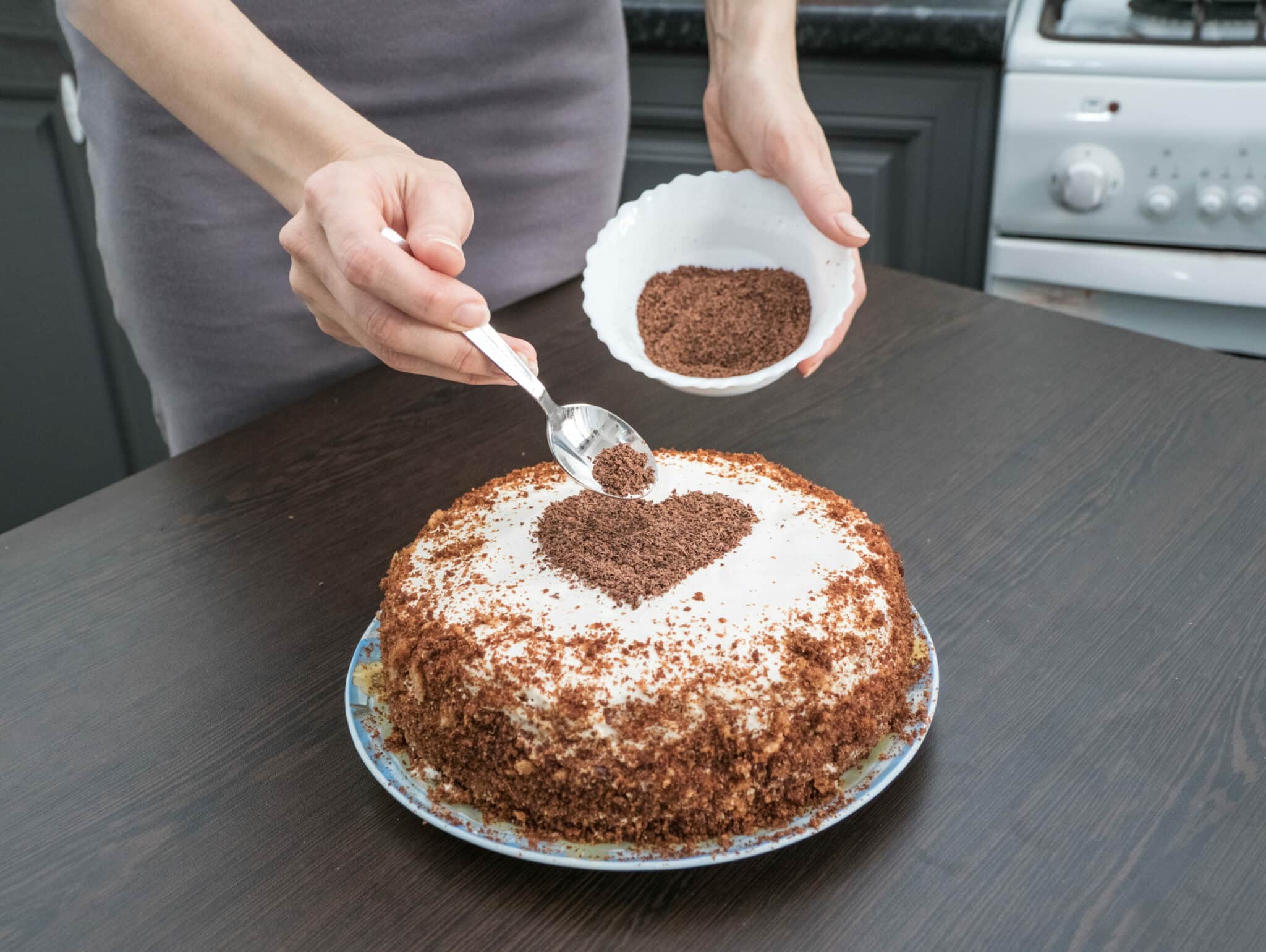You’re probably one of those bakers (or cake lovers in general) that enjoy the frosting more than the cake. So you’re very particular about what goes into making it. If so, you might know that cream cheese is one ingredient that many people love to use in their frosting recipes. With the wonderful and unique tangy richness that cream cheese brings to recipes, who wouldn’t love it But then, cream cheese might not always be available at your fingertips. There might also be times when you crave a different taste or try to avoid the calories and fat that cream cheese enables.
It should thus please you to know that other substitutes can be used to replicate the tangy richness of cream cheese in frosting recipes. It is important to know how to properly use these substitutes in the right methods and amounts to ensure that your frosting comes out perfectly and in great taste. It would also be good to know what properties make a substitute suitable for replacing cream cheese in frosting recipes.
What is cream cheese?
Cream cheese is a fresh cheese with a mild and smooth flavor, made from cow milk and cream. The presence of cow milk in its composition indicates its freshness. Cream cheese is the same as other milk products like cream, milk, butter, and yogurt. It can be used for a variety of sweet and savory dishes.
In the production process of cream cheese, lactic acid bacteria are introduced to the cream, causing the pH to drop and the fat to separate from the liquid, in other words, curdling it. The mixture is then cooked, introducing stabilizers such as carob bean gum and carrageenan, and like that, cream cheese is formed.
Cream cheese is commonly spread on bread, bagels, crackers, and other similar foods and used as a creamy dip for potato chips and other snack foods, as well as in salads. It can be combined with other ingredients to make spreads, such as yogurt or pepper jelly. It can also be used to make cheesecake and to thicken and cream sauces in the kitchen.
Cream Cheese Nutrition Facts

Cream cheese uses in frosting recipes
Cream cheese is one of the most well-known cheeses, owing perhaps to its mild flavor, which allows it to be used in various sweet and savory dishes. It is used to add a great tangy richness to a range of cuisines.
In addition to these functions, however, cream cheese is also helpful in frosting recipes. For example, if your frosting is excessively sweet and runny, try adding some cream cheese. This will help thicken the consistency of the frosting and offer a tangy contrast to the sweetness. Some of the frosting recipes in which cream cheese is popularly used include:
- Buttercream frosting
- Ermine frosting
- Chocolate frosting
- Vanilla cream cheese frosting
- Brown butter frosting
- White chocolate pudding frosting
- Lemon cream cheese frosting
- Fluffy buttermilk frosting
- Coconut buttercream frosting
- Red velvet frosting
- Marshmallow buttercream frosting
- Chocolate ganache frosting
- Cinnamon sugar cream cheese frosting
- Cookies and cream frosting
- Key Lime Pie frosting
Substitutes for cream cheese in frosting
Cream cheese is a very useful and thus popular ingredient in many cooking procedures, especially baking. However, with a mild flavor and tangy richness, it’s no wonder that many people prefer to use it in their frosting recipes. However, there’s also the advantage that it can thicken frosting successfully and add a contrasting tanginess in cases where frosting is too sweet. There might, however, come a time when you seek a different taste in your frosting recipes, or you’ve run out of cream cheese in your pantry altogether. Also, because cream cheese is mostly made out of milk and cream, it has relatively high fat and calorie content. You could thus be looking to avoid the use of cream cheese due to health concerns. In such situations, there are great substitutes that can work as excellent replacements for cream cheese. However, it is nonetheless important to understand how to properly use these substitutes in place of cream cheese to get the best results.
Ricotta cheese
Ricotta cheese originates from Italy and has a smooth texture and a sweet, tangy flavor. Ideally eaten in its fresh state, it has a creamy aftertaste and a milder flavor than most cheeses. It has a high protein, calcium, vitamin B12, and riboflavin content, just like cream cheese and other dairy products.
Even though cottage cheese does not have the same thickness as cream cheese, it works well as a stuffing or ingredient in sauces and spreads. It can also be used in baked items and desserts by mixing with an equivalent amount of heavy cream or yogurt. Ricotta cheese has a crumbly quality, and as such, if it is to be used as a cream cheese substitute in a cheesecake or cake frosting recipe, you’ll need to combine it with equal parts heavy cream or yogurt for a better flavor and texture.
Cottage cheese
Cottage cheese is a yogurt-based fresh cheese that is typically not processed for aging. This cheese type has a lower fat composition than traditional cream cheese. Cottage cheese is an excellent substitute for cream cheese, with a composition that is 70% protein and 11% of the daily calcium requirement.
Cottage cheese and cream cheese are comparable in many ways. However, cottage cheese has a chunkier texture and is slightly lower in fat. However, cottage cheese can be pureed with a dash of lemon juice to make the texture smoother. Cottage cheese can be used in equal amounts as a substitute for cream cheese in dips and spreads. Consider thickening it with cream or half-and-half before using it in baking or cooking. You’ll also need to add an equal amount of heavy cream to cottage cheese to use it as a cream cheese substitute in desserts and frostings.
Mascarpone
Mascarpone is a high-fat, cream cheese variety that is usually produced with cream instead of milk. Mascarpone is perhaps the most ideal cream cheese substitute. This soft cheese is richer and creamier than cream cheese, yet it may be used in many of the same recipes as cream cheese, although not vice versa. It has a deeper and more velvety texture that works well in many recipes, especially fillings, spreads, frostings, and desserts while being heavier in fat and calories than cream cheese. Also, if you’re looking to replicate the typical tangy taste of cream cheese in mascarpone, season it with a pinch of salt and a spritz of fresh lemon juice. It is, however, important to consider other substitute options if you have calorie-related health concerns.
Frequently asked questions (FAQs)
Can I use milk instead of cream cheese?
Overall, milk isn’t a good cream cheese substitute. It can imitate the flavor. However, due to the thin consistency of milk, it will not be the same.
What is the difference between cream cheese and Greek yogurt?
The goal of manufacturing cream cheese is to drain as much whey as possible, resulting in a semi-solid texture—rennet aids in curdling solids and liquid extraction. The draining phase isn’t required for yogurt, though it can be done if you want a thicker Greek-style yogurt.
Can I use silken tofu instead of cream cheese?
Silken and soft tofu may be easily included in various sweets due to their creamy texture. Tofu can be applied as a great cream cheese substitute in this case.
Conclusion
If you’re one of the people looking to replicate the unique richness of cream cheese in your frosting recipes, then you should try out one of our suggested options. These options vary in nature and composition, but if used in the right amounts and methods, they will suffice to carry out the typical functions of cream cheese in different kinds of frostings. So, next time you’re out of cream cheese or have health concerns or a craving for something different, all you need to do is explore the possibilities with something new. You might be pleased with what you’ll discover.




